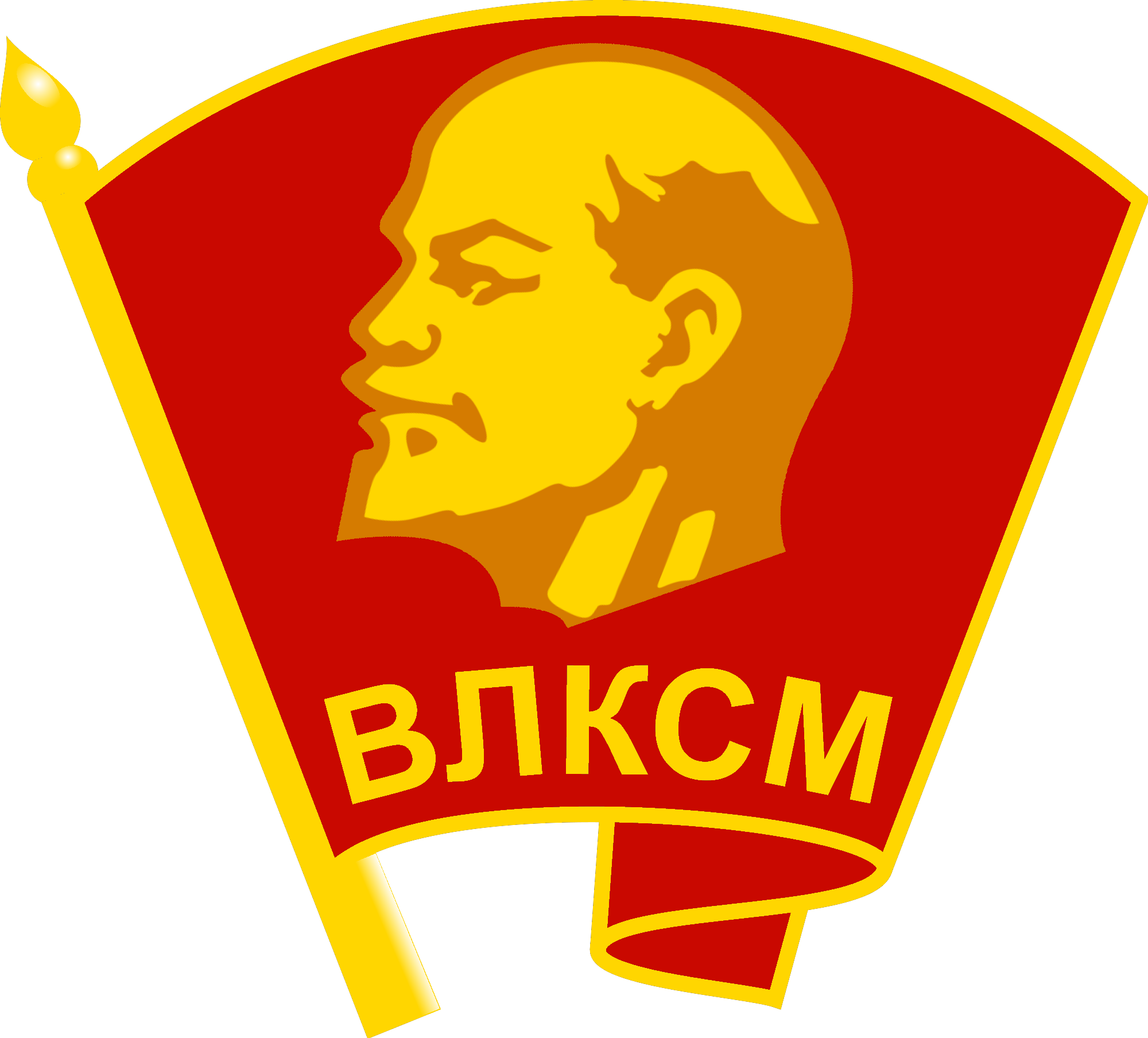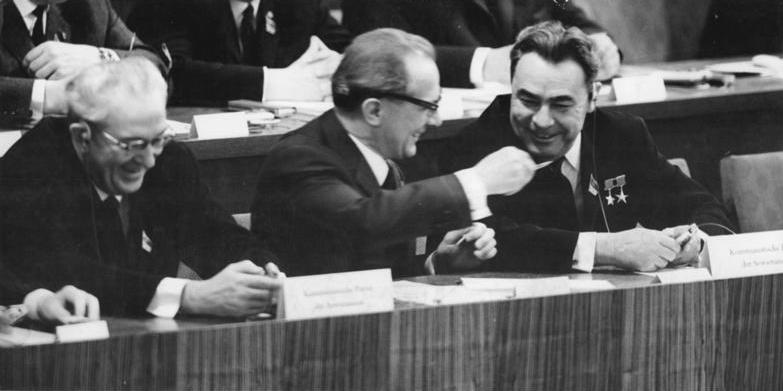|
Leninist Communist Youth League Of The Karelo-Finnish SSR
Leninist Communist Youth League of the Karelo-Finnish SSR (russian: ąøąĄąĮąĖąĮčüą║ąĖą╣ ą║ąŠą╝ą╝čāąĮąĖčüčéąĖč湥čüą║ąĖą╣ čüąŠčÄąĘ ą╝ąŠą╗ąŠą┤ąĄąČąĖ ąÜą░čĆąĄą╗ąŠ-ążąĖąĮčüą║ąŠą╣ ąĪąĪąĀ, LKSM KFSSR) was the republican branch of the Komsomol, All Union Leninist Communist Youth League (''Komsomol'') in the Karelo-Finnish SSR 1940-1956. The first congress of LKSM KFSSR was held June 1-June 3, 1940. The conference elected a Central Committee, with Yuri Andropov as its First Secretary. During the Second World War, the Central Committee of the LKSM KFSSR organized Soviet partisans, partisan resistance against the occupying forces, both in urban and rural areas. Andropov continued in the post until 1944. In total seven congresses of LKSM KFSSR were held. LKSM KFSSR published the newspaper ą«ąĮčŗąĄ ą╗ąĄąĮąĖąĮčåčŗ (''Young Lenin's Follower'') and ą£ąŠą╗ąŠą┤ąŠą╣ ą▒ąŠą╗čīčłąĄą▓ąĖą║ (''Young Bolshevik''). References Komsomol Politics of the Republic of Karelia 1940 establishments in the Sov ... [...More Info...] [...Related Items...] OR: [Wikipedia] [Google] [Baidu] |
Komsomol
The All-Union Leninist Young Communist League (russian: link=no, ąÆčüąĄčüąŠčĹʹĮčŗą╣ ą╗ąĄąĮąĖąĮčüą║ąĖą╣ ą║ąŠą╝ą╝čāąĮąĖčüčéąĖč湥čüą║ąĖą╣ čüąŠčÄąĘ ą╝ąŠą╗ąŠą┤čæąČąĖ (ąÆąøąÜąĪą£), ), usually known as Komsomol (; russian: ąÜąŠą╝čüąŠą╝ąŠą╗, links=no ()), a syllabic abbreviation of the Russian ), was a political youth organization in the Soviet Union. It is sometimes described as the youth division of the Communist Party of the Soviet Union (CPSU), although it was officially independent and referred to as "the helper and the reserve of the CPSU". The Komsomol in its earliest form was established in urban areas in 1918. During the early years, it was a Russian organization, known as the Russian Young Communist League, or RKSM. During 1922, with the unification of the USSR, it was reformed into an all-union agency, the youth division of the All-Union Communist Party. It was the final stage of three youth organizations with members up to age 28, graduated at 14 from the Young Pioneer ... [...More Info...] [...Related Items...] OR: [Wikipedia] [Google] [Baidu] |
Karelo-Finnish SSR
The Karelo-Finnish Soviet Socialist Republic (Karelo-Finnish SSR; fi, ; rus, ąÜą░čĆąĄ╠üą╗ąŠ-ążąĖ╠üąĮčüą║ą░čÅ ąĪąŠą▓ąĄ╠üčéčüą║ą░čÅ ąĪąŠčåąĖą░ą╗ąĖčüčéąĖ╠üč湥čüą║ą░čÅ ąĀąĄčüą┐čā╠üą▒ą╗ąĖą║ą░, r=Karelo-Finskaya Sovetskaya Sotsialisticheskaya Respublika), also called Soviet Karelia or simply known as Karelia, was a republic of the Soviet Union. It existed from 1940 until it was made part of the Russian SFSR in 1956 as the Karelian Autonomous Soviet Socialist Republic. The latter became the Republic of Karelia, a federal subject of Russia, on 13 November 1991. History The Karelo-Finnish Soviet Socialist Republic was established by the Soviet government on 31 March 1940 by merging the KASSR with the Finnish Democratic Republic. The latter was created in territory ceded by Finland in the Winter War by the Moscow Peace Treaty, namely the Karelian Isthmus and Ladoga Karelia, including the cities of Viipuri and Sortavala. Virtually the entire Karelian population of the ceded areas ... [...More Info...] [...Related Items...] OR: [Wikipedia] [Google] [Baidu] |
Central Committee
Central committee is the common designation of a standing administrative body of Communist party, communist parties, analogous to a board of directors, of both ruling and nonruling parties of former and existing socialist states. In such party organizations, the committee would typically be made up of delegates elected at a party congress. In Communist state, those states where it constituted the state power, the central committee made decisions for the party between congresses and usually was (at least nominally) responsible for electing the politburo. In non-ruling communist parties, the central committee is usually understood by the party membership to be the ultimate decision-making authority between congresses once the process of democratic centralism has led to an agreed-upon position. Non-communist organizations are also governed by central committees, such as the right-wing Likud party in Israel, the North American Mennonite Central Committee, Mennonite Church and Alcoholic ... [...More Info...] [...Related Items...] OR: [Wikipedia] [Google] [Baidu] |
Yuri Andropov
Yuri Vladimirovich Andropov (ŌĆō 9 February 1984) was the sixth paramount leader of the Soviet Union and the fourth General Secretary of the Communist Party of the Soviet Union. After Leonid Brezhnev's 18-year rule, Andropov served in the post from November 1982 until his death in February 1984. Earlier in his career, Andropov served as the Soviet ambassador to Hungary from 1954 to 1957, during which time he was involved in the suppression of the 1956 Hungarian Uprising. He was named chairman of the KGB on 10 May 1967. In this position, he oversaw a massive crackdown on dissent carried out via mass arrests and involuntary psychiatric commitment of people deemed "socially undesirable". After Brezhnev suffered a stroke in 1975 that impaired his ability to govern, Andropov effectively dominated policy-making alongside Foreign Minister Andrei Gromyko, Defense Minister Andrei Grechko and Grechko's successor, Marshal Dmitry Ustinov, for the rest of Brezhnev's rule. Upon Brezhnev ... [...More Info...] [...Related Items...] OR: [Wikipedia] [Google] [Baidu] |
Second World War
World War II or the Second World War, often abbreviated as WWII or WW2, was a world war that lasted from 1939 to 1945. It involved the vast majority of the world's countriesŌĆöincluding all of the great powersŌĆöforming two opposing military alliances: the Allies and the Axis powers. World War II was a total war that directly involved more than 100 million personnel from more than 30 countries. The major participants in the war threw their entire economic, industrial, and scientific capabilities behind the war effort, blurring the distinction between civilian and military resources. Aircraft played a major role in the conflict, enabling the strategic bombing of population centres and deploying the only two nuclear weapons ever used in war. World War II was by far the deadliest conflict in human history; it resulted in 70 to 85 million fatalities, mostly among civilians. Tens of millions died due to genocides (including the Holocaust), starvation, ma ... [...More Info...] [...Related Items...] OR: [Wikipedia] [Google] [Baidu] |
Soviet Partisans
Soviet partisans were members of resistance movements that fought a guerrilla war against Axis forces during World War II in the Soviet Union, the previously Soviet-occupied territories of interwar Poland in 1941ŌĆō45 and eastern Finland. The activity emerged after Nazi Germany's Operation Barbarossa was launched from mid-1941 on. It was coordinated and controlled by the Soviet government and modeled on that of the Red Army. The partisans made a significant contribution to the war by countering German plans to exploit occupied Soviet territories economically, gave considerable help to the Red Army by conducting systematic attacks against Germany's rear communication network, disseminated political rhetoric among the local population by publishing newspapers and leaflets, and succeeded in creating and maintaining feelings of insecurity among Axis forces. Soviet partisans also operated on interwar Polish and Baltic territories occupied by the Soviet Union in 1939ŌĆō1940, but ... [...More Info...] [...Related Items...] OR: [Wikipedia] [Google] [Baidu] |
Bundesarchiv Bild 183-10624-0003, Budapest, II
, type = Archive , seal = , seal_size = , seal_caption = , seal_alt = , logo = Bundesarchiv-Logo.svg , logo_size = , logo_caption = , logo_alt = , image = Bundesarchiv Koblenz.jpg , image_caption = The Federal Archives in Koblenz , image_alt = , formed = , preceding1 = , preceding2 = , dissolved = , superseding1 = , superseding2 = , agency_type = , jurisdiction = , status = Active , headquarters = PotsdamerStra├¤e156075Koblenz , coordinates = , motto = , employees = , budget = million () , chief1_name = Michael Hollmann , chief1_position = President of the Federal Archives , chief2_name = Dr. Andrea H├żnger , chief2_position ... [...More Info...] [...Related Items...] OR: [Wikipedia] [Google] [Baidu] |
Politics Of The Republic Of Karelia
The Republic of Karelia (russian: ąĀąĄčüą┐čā╠üą▒ą╗ąĖą║ą░ ąÜą░čĆąĄ╠üą╗ąĖčÅ, Respublika Kareliya; ; krl, Karjalan ta┼Īavalta; ; fi, Karjalan tasavalta; vep, Karjalan Tazovaldkund, Ludic: ''KardŌĆÖalan tazavald''), also known as just Karelia (russian: ąÜą░čĆąĄ╠üą╗ąĖčÅ, ąÜą░╠üčĆčīčÅą╗ą░; krl, Karjala), is a republic of Russia situated in Northwest Russia. The republic is a part of the Northwestern Federal District, and covers an area of , with a population of 603,067 residents. Its capital is Petrozavodsk. The modern Karelian Republic was founded as an autonomous republic within the Russian SFSR by the Resolution of the Presidium of the All-Russian Central Executive Committee (VTsIK) on 27 June 1923 and by the Decree of the VTsIK and the Council of People's Commissars of 25 July 1923, from the Karelian Labour Commune. From 1940 to 1956, it was known as the Karelo-Finnish Soviet Socialist Republic, one of the union republics in the Soviet Union. In 1956, it was once again made an a ... [...More Info...] [...Related Items...] OR: [Wikipedia] [Google] [Baidu] |
1940 Establishments In The Soviet Union
Year 194 ( CXCIV) was a common year starting on Tuesday (link will display the full calendar) of the Julian calendar. At the time, it was known as the Year of the Consulship of Septimius and Septimius (or, less frequently, year 947 ''Ab urbe condita''). The denomination 194 for this year has been used since the early medieval period, when the Anno Domini calendar era became the prevalent method in Europe for naming years. Events By place Roman Empire * Emperor Septimius Severus and Decimus Clodius Septimius Albinus Caesar become Roman Consuls. * Battle of Issus: Septimius Severus marches with his army (12 legions) to Cilicia, and defeats Pescennius Niger, Roman governor of Syria. Pescennius retreats to Antioch, and is executed by Severus' troops. * Septimius Severus besieges Byzantium (194ŌĆō196); the city walls suffer extensive damage. Asia * Battle of Yan Province: Warlords Cao Cao and L├╝ Bu fight for control over Yan Province; the battle lasts for over 100 day ... [...More Info...] [...Related Items...] OR: [Wikipedia] [Google] [Baidu] |




